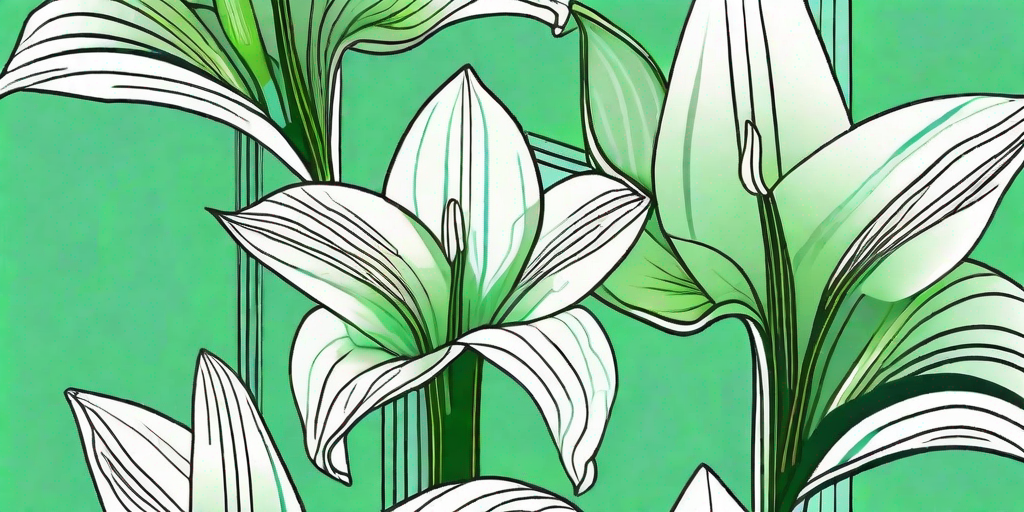
The Amaryllis plant, with its lush green leaves and stunning blooms, is a showstopper in any indoor garden. But what if we told you that the secret to its beauty lies not in the flowers, but in the leaves? Intriguing, isn't it? So, let's dive into the world of Amaryllis leaves and discover how to make your indoor plants the envy of all your friends.
The Importance of Amaryllis Leaves
Before we delve into the nitty-gritty of Amaryllis leaf care, let's take a moment to appreciate these unsung heroes. Amaryllis leaves are more than just a pretty green backdrop for the flowers. They are the powerhouses of the plant, working tirelessly to photosynthesize and provide the plant with the energy it needs to grow and bloom.
But that's not all. Amaryllis leaves also play a crucial role in the plant's overall health. They help regulate water intake, protect the plant from pests, and even contribute to the plant's structural integrity. So, if you've been neglecting your Amaryllis leaves, it's time to give them the attention they deserve.
Caring for Amaryllis Leaves
Now that we've established the importance of Amaryllis leaves, let's talk about how to care for them. Don't worry, it's not as daunting as it sounds. With a little bit of knowledge and a dash of patience, you'll be a leaf whisperer in no time.
Lighting
Amaryllis leaves love light. They thrive in bright, indirect sunlight. So, place your Amaryllis plant near a window where it can bask in the sun's rays. But remember, while they love light, they don't appreciate being scorched. Direct, harsh sunlight can cause the leaves to turn yellow and wither.
During the winter months, when sunlight is scarce, consider using artificial grow lights. These can provide your Amaryllis with the light it needs to keep its leaves green and gorgeous.
Watering
Watering is a crucial part of Amaryllis leaf care. These plants prefer a good soak, followed by a period of dryness. Overwatering can lead to root rot, a deadly condition for any plant. So, how do you know when to water your Amaryllis? A good rule of thumb is to wait until the top inch of soil is dry before watering.
When you do water, make sure to water thoroughly. The water should drain out of the bottom of the pot. This ensures that the roots get a good soak. But remember, don't let your Amaryllis sit in water. After watering, remove any excess water from the saucer to prevent root rot.
Fertilizing
Amaryllis leaves are heavy feeders. They need a steady supply of nutrients to maintain their vibrant green color and support the plant's growth. A balanced, water-soluble fertilizer applied every two to four weeks during the growing season should do the trick.
But be careful not to over-fertilize. Too much fertilizer can cause the leaves to turn yellow and fall off. Always follow the manufacturer's instructions when applying fertilizer.
Common Problems with Amaryllis Leaves
Despite your best efforts, you may encounter some problems with your Amaryllis leaves. But don't panic. Most of these issues are easily resolved with a little bit of TLC.
Yellow Leaves
Yellow leaves are a common problem in Amaryllis plants. This can be caused by a variety of factors, including overwatering, too much sunlight, or a lack of nutrients. To remedy this, adjust your watering schedule, move your plant to a location with less direct sunlight, or apply a balanced fertilizer.
Brown Tips
If the tips of your Amaryllis leaves are turning brown, it could be a sign of underwatering or low humidity. Increase your watering frequency and consider using a humidifier to increase the humidity around your plant.
FAQs about Amaryllis Leaves
- Why are my Amaryllis leaves drooping?
Drooping leaves can be a sign of overwatering or underwatering. Check the soil to determine which is the case and adjust your watering schedule accordingly.
- Can I cut off the leaves of my Amaryllis?
It's best to let the leaves die back naturally. They provide the plant with energy and nutrients, so removing them prematurely can harm the plant.
- Why are my Amaryllis leaves turning yellow?
Yellow leaves can be a sign of overwatering, too much sunlight, or a lack of nutrients. Adjust your care routine based on these factors.
Conclusion
So there you have it, the secret to stunning indoor plants lies in the care of Amaryllis leaves. With the right care and attention, your Amaryllis leaves can stay green and gorgeous all year round, making your indoor garden a sight to behold.
Remember, every plant is unique and may require slightly different care. So, keep an eye on your Amaryllis, pay attention to its needs, and don't be afraid to adjust your care routine as needed. Happy gardening!















